You know you’re doing poorly if you end up in this kind of double bill.
It’s not often we get a Canadian disaster film – though the film is set in some unnamed American city – but like it’s American cousins, City on Fire follows the tried and true method of assembling a star studded cast – with the American stars getting limited screen time to cut down on costs – and then having their “dramatic” lives thrown into disarray by some disaster or another.We have corrupt mayor William Dudley (Leslie Nielsen), who allowed an oil refinery to be built inside the city limits; Diana Brockhurst-Lautrec (Susan Clark), rich widow socialite that just so happens to be in town for the dedication of a new hospital – where the film’s climax will take place – and she’s also having an affair with Mayor Dudley. Next we have hospital Chief of Staff Frank Whitman (Barry Newman), who is informed by head nurse Andrea Harper (Shelley Winters) that this new hospital isn’t exactly up to code, and Frank himself is a bit of a sexual player – we are introduced to him blowing off a one-night-stand, who later turns out to be a nurse working at his hospital – so, obviously, he will eventually hook-up with Diana, because you have to have true love win out in a disaster film. Rounding out this all-star cast are Ava Gardner as alcoholic reporter Maggie Grayson, James Franciscus as Maggie’s put-upon producer, and Henry Fonda as Fire Chief Risley, who is clearly in “Boat Payment Theater" mode.
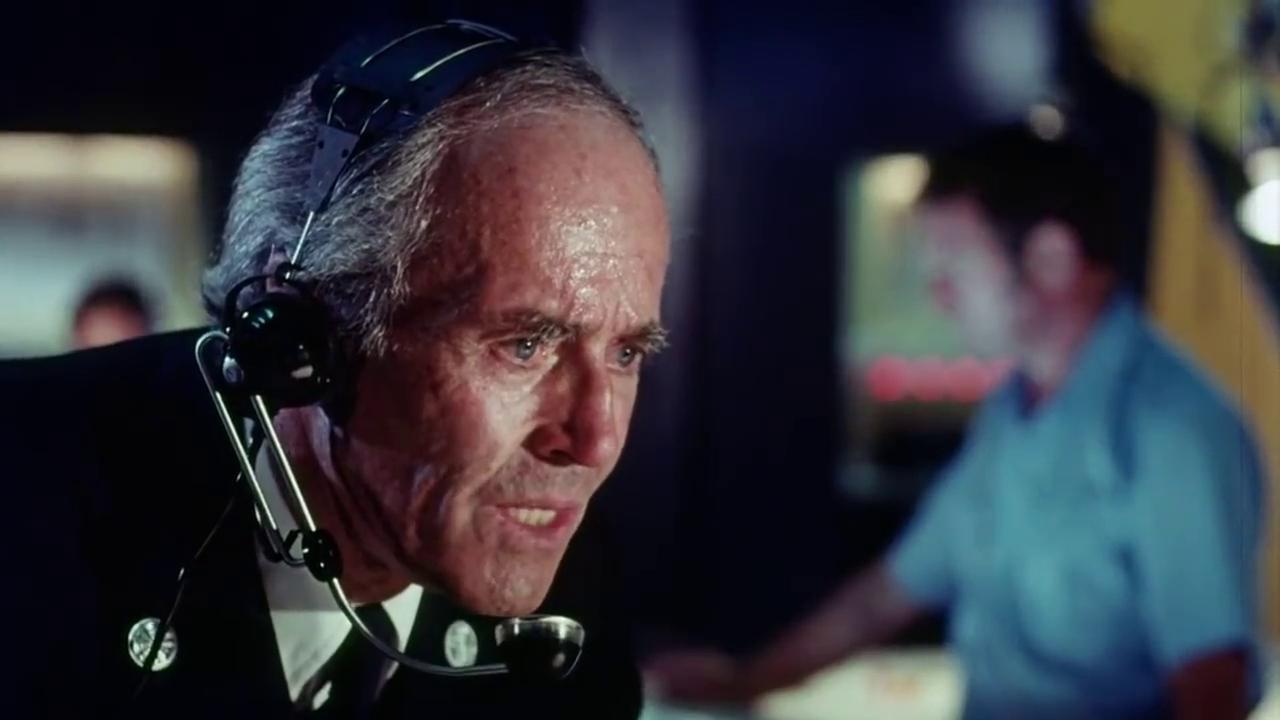 “Has my cheque cleared yet?”
“Has my cheque cleared yet?”
Like many disaster films, there really isn’t much of a plot, and this one's catastrophe is started by a disgruntled employee (Jonathan Welsh), who starts the fire out of sheer spite after being fired, and then for the next two hours we just bounce from one group of characters to another, seeing how they handle the raging fire around them. To pad out the running time, we get a couple kids starting a fire near their tree house – in a scene that works as an anti-smoking PSA – and then there is a subplot dealing with a couple reporters who have photographic evidence of Diana’s affair with the mayor, but none of it really goes anywhere, nor is it all that relevant, and it mostly just acts to add potential victims to the big fire to come. Of course, what audiences have come to see is all the glorious calamity that a major disaster will bring, and director Alvin Rakoff – a man most known for the terribly campy film Death Ship – does pack this film with a considerable amount of fiery carnage, and to spread the budget a bit further, he manages to sneak in plenty of news reel footage of actual fires.
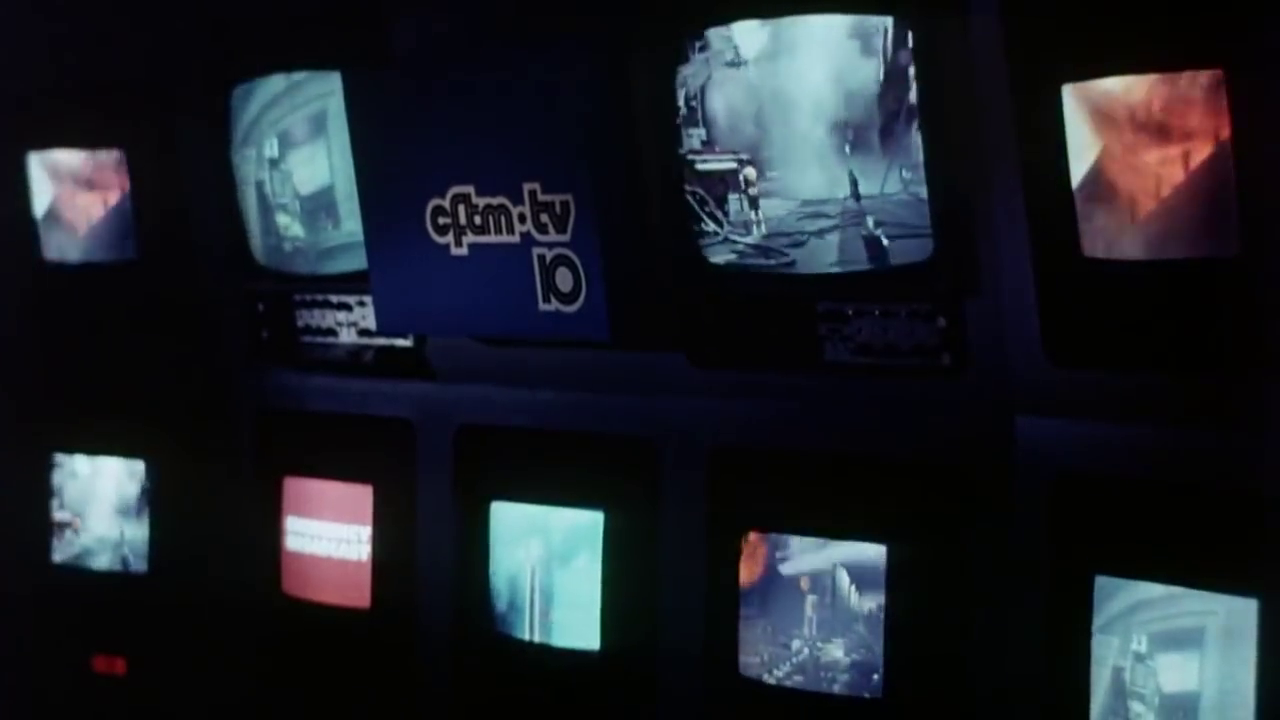 “Stock footage runs rampant throughout the city. Film at Eleven.”
“Stock footage runs rampant throughout the city. Film at Eleven.”
I will tip my hat off to the men and women who make up the stunt team, they provided some truly amazing fire gags for this film– one particular stuntman is bounced off the hood of a passing car, while doing a full body burn, and it is amazing – but you can only afford so much practical effects and stunt work, and when the visual effects end and the people step in to take care of the big moments, well let’s just say things get a little less convincing.Is that a fire or the Aurora Borealis?
Drama kicks into high gear when fire chief Risley informs the Mayor that the new hospital is about to become the center of a Fire Storm — when this happens all the oxygen will be sucked out and everyone inside will suffocate – and so a major evacuation must be organized. It's this rescue attempt that takes up the bulk of the film’s last act – with side moments of Diana helping a woman give birth and Dr. Whitman leading a bunch children in an enforced game of Follow the Leader – culminating in the fire department creating a “tunnel of water” for the evacuees to flee through. As a whole, this stuff works rather well – though the long shots of people staggering down fire-torn streets could have been trimmed to help the pacing – and we do get some good "edge of your seat" moments.I’m curious as to what the film’s water budget was.
City on Fire doesn’t bring anything new to the genre: stock characters deal with their numerous cliché problems amongst the flames, as expected, and aside from the aforementioned stunt work, which I must say again was damn impressive, there is nothing to really set the film apart from its brethren. I will say it’s nice seeing James Franciscus playing a decent human being this time around – he plays total assholes in The Towering Inferno and When Time Ran Out – and many people today only know Leslie Nielson from Airplane parodies and The Naked Gun movies, but he was a fairly respected dramatic actor for decades, and he gives a nice multi-dimensional lift to what would normally be the stock corrupt politician.
 “Yes, I’m serious … And don’t call me Shirley.”
“Yes, I’m serious … And don’t call me Shirley.”
Most disaster films deal with natural disasters, earthquakes, storms, tidal waves, or accidents like plane crashes and building fires, but City on Fire is the rare example where there is an actual human villain, and not just some asshole guilty of fire code violations. But what is strange here is that when the film ends, we get this strange monologue from Henry Fonda, where he states, “All it takes is one man, could be anybody... your neighbor, my neighbor... one man to destroy a city.” A nice sentiment to be sure, but at no point in this film did anybody learn about the disgruntled worker who started the fire, and he dies without telling anyone. So where did the fire chief come up with this “one man to destroy a city” idea? One has to assume the filmmakers got to the end of the movie and then had a sudden epiphany, “We need a message,” and stuck on that bit of treacle crap, hoping that the great Henry Fonda could sell it. That this coda was not earned – or really even needed – is a perfect example of writers not really giving a damn about the story, and that if you are going to make your disaster film into a treatise on humanity, then maybe you shouldn’t wait until the last 30 seconds to dive into the subject.“It only takes one cliché character to destroy a city.”
City on Fire was made because Canadian tax incentives allowed the filmmakers to make a disaster film without spending too much money, and though it doesn’t have much in the way of great visual effects, there is enough practical effects and amazing stunt work to give this film a recommend to fans of the genre.Note: The film is, of course, guilty of "stunt casting " by including numerous stars with a solid history of disaster films under their collective belts, which is always a bit of treat to spot.
City on Fire - Disaster Pedigree:
• Henry Fonda was in The Swarm.
• Ava Gardner starred in Earthquake.
• Leslie Nielsen and Shelley Winters were in The Poseidon Adventure.
• James Franciscus was in both The Towering Inferno and When Time Ran Out.
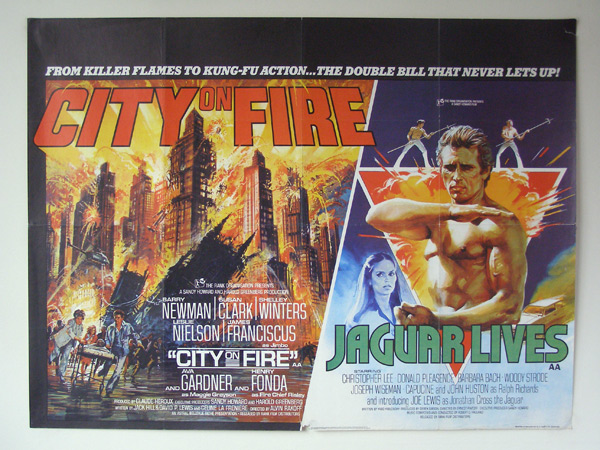
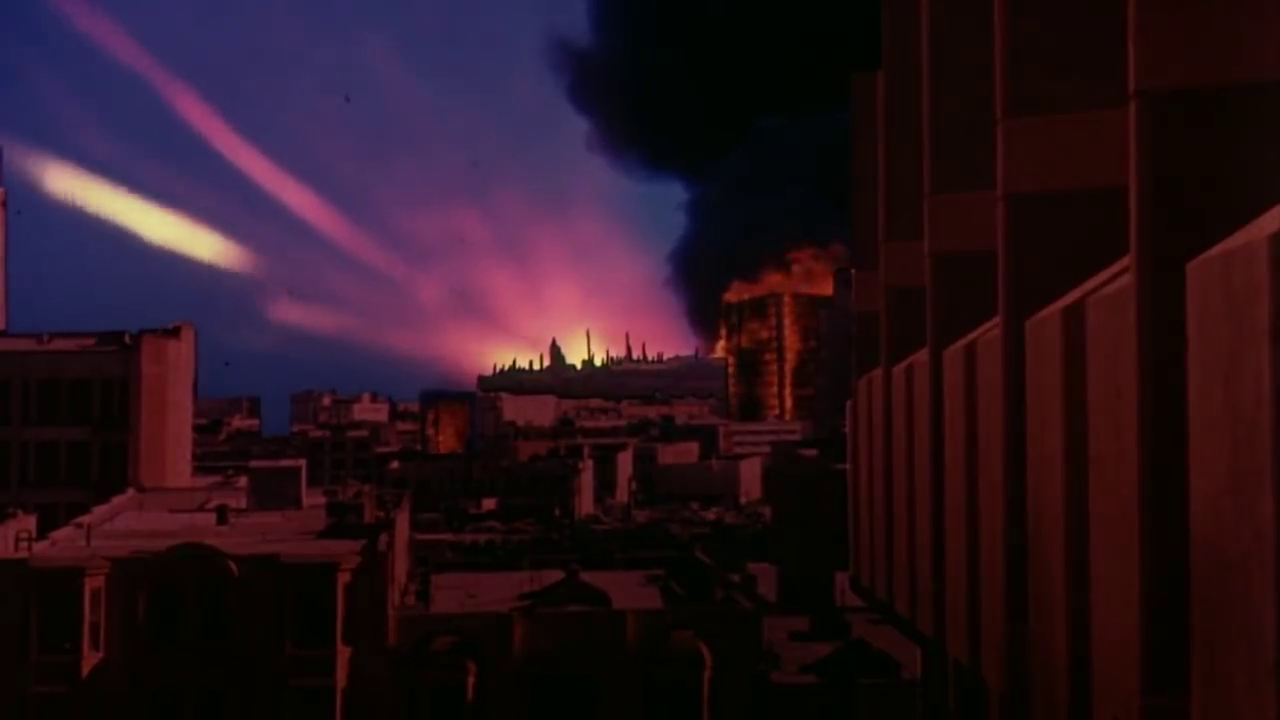
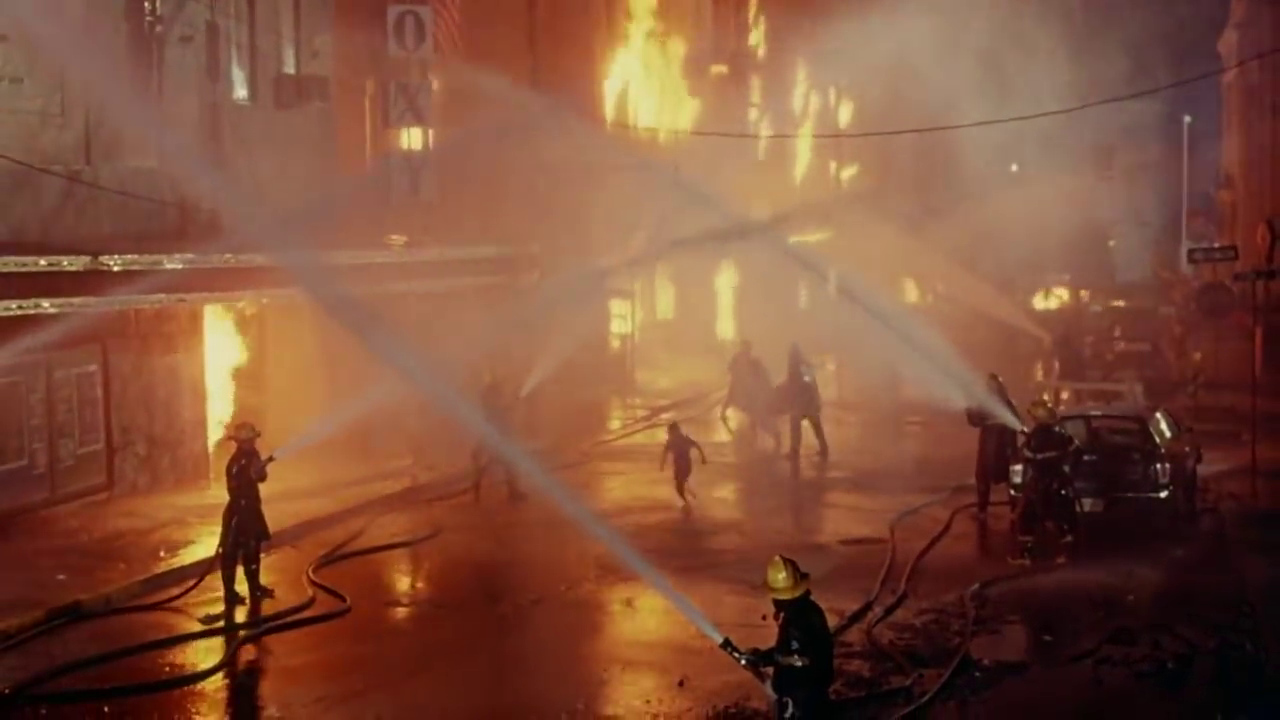
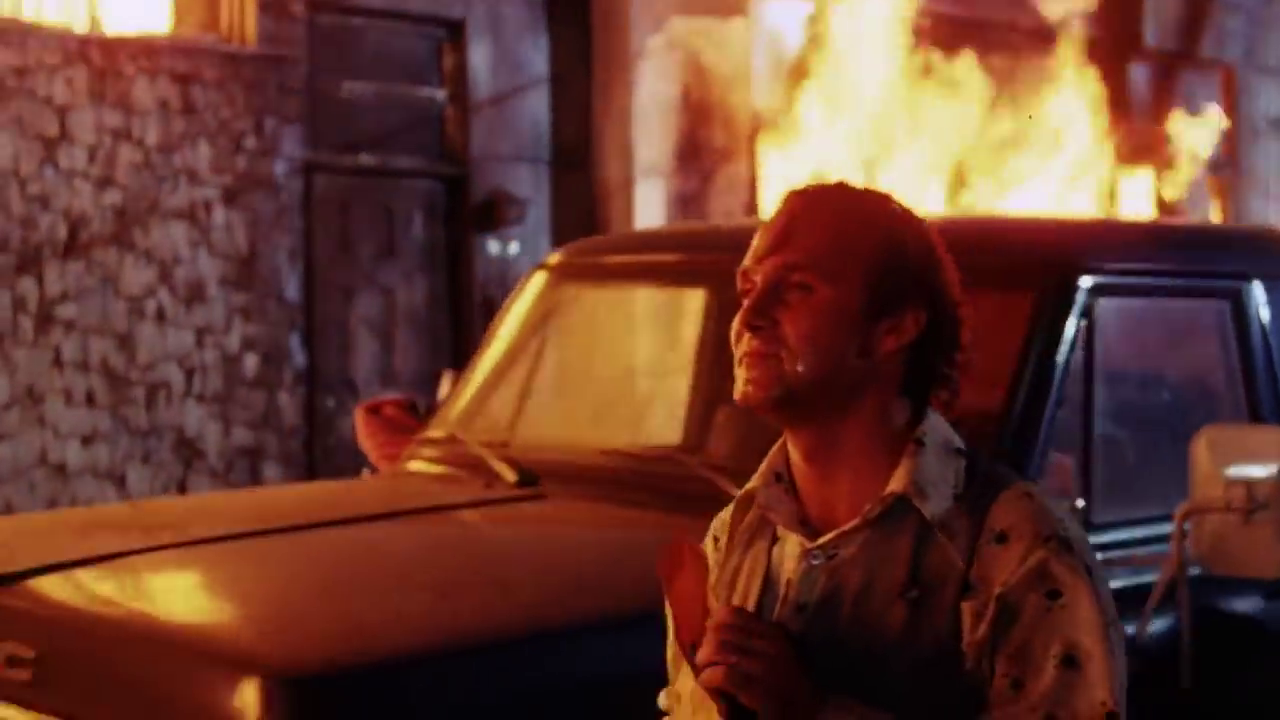
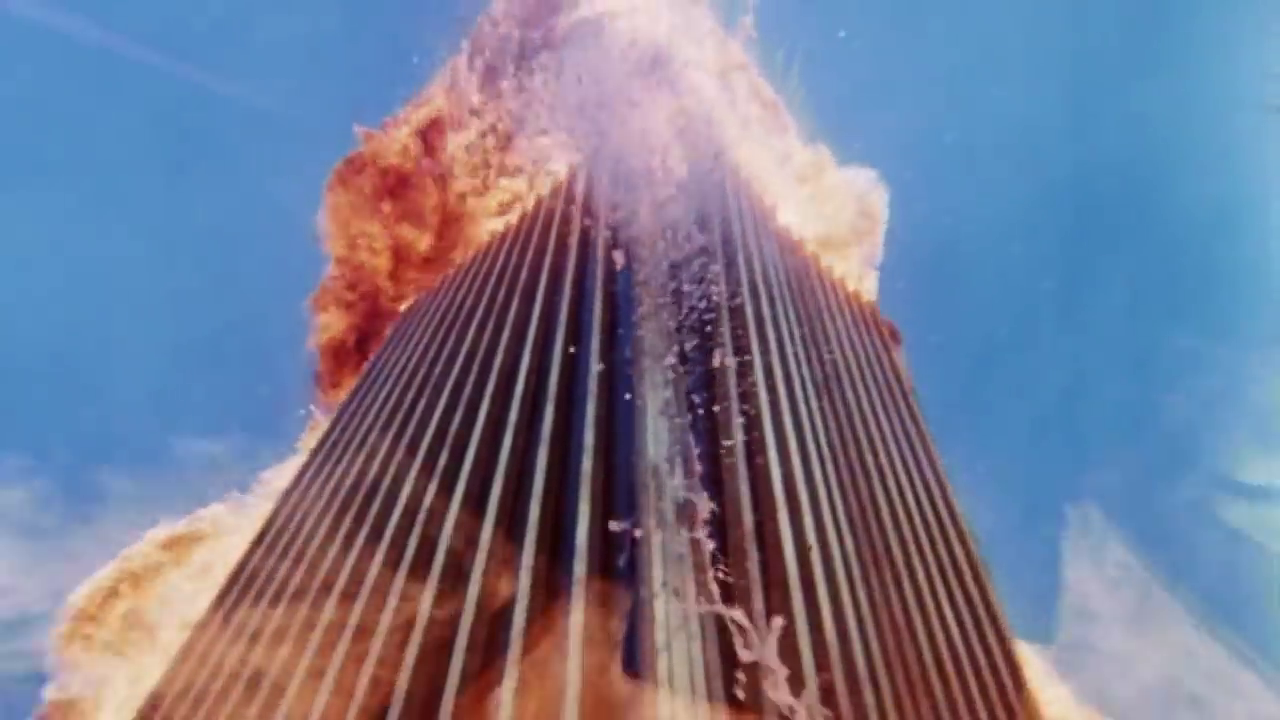

No comments:
Post a Comment